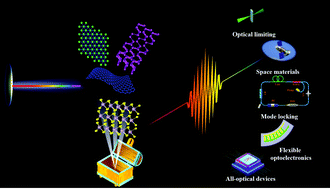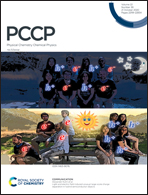2D materials towards ultrafast photonic applications
Abstract
Having accomplished progress in the versatile battlefields of optics, electronics, catalysis, etc., two-dimensional (2D) materials are now venturing and excelling in yet another arena of ultrafast photonics, a rapidly developing field encompassing a large range of important applications including optical modulation through optical limiting/mode-locking, photodetectors, optical communications, integrated miniaturized all-optical devices and so on. Our group has been devoted to building the arsenal of 2D materials with large third-order nonlinearities, including transition metal dichalcogenides (TMDs), carbon nitride, single-element materials from Group 15, 2D hybrids and vdW heterostructures. In particular, we explore their origin of nonlinear optical responses from the aspect of excited state dynamics using time-resolved spectroscopic techniques such as femtosecond transient absorption spectroscopy. In this review, we propose the roadmap for screening 2D materials for ultrafast photonics through focusing on the third-order nonlinear optical properties of 2D materials and corresponding applications, and then performing mechanistic investigations via time-resolved spectroscopy and calculations, which in turn provide feedback to further guide the fabrication of 2D materials. We offer our own insights on the future trends for the development and theoretical calculations of 2D materials/devices in the final part of Perspectives.

- This article is part of the themed collections: PCCP Perspectives and 2020 PCCP HOT Articles


 Please wait while we load your content...
Please wait while we load your content...